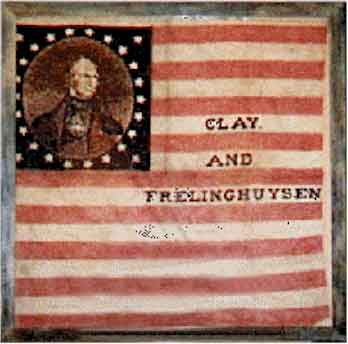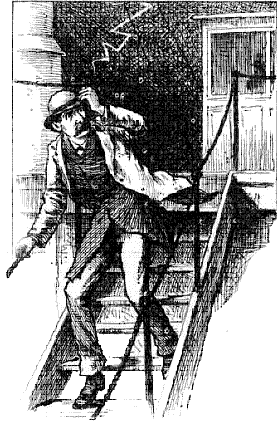"Raymond Years Ago"
By George W. Harper
Journalist - Editor - Owner Of Hinds County Gazette 1845-1883
A Series Published in the Hinds County Gazette, 1878-1879
From the Gillespie Collections edited by Pattie Adams Snowball and Rebecca Blackwell Drake
Home Page
Harper Arrives in Mississippi
Vicksburg & Meridian RR
Businesses in 1844
The Raymond Bar
Early Merchants
1844 Businesses
Seat of Justice
Cotton Industry
Early Churches
Establishment of Schools
John B. Peyton
Raymond Area Homes
Medicinal Resorts & Spas
The Mexican War
Early Churches
Early Schools
Raymond Female Institute
Raymond Military Institute
McNutt-Foote Debate
1844 Presidential Election
Local Elections of 1845
Literary Raymond
Raymond Fires
Old Log Jail
Death of Jos. Stewart
Murder of Benj. Sims
Duel Ends in Death
Raymond & Bolton RR
Harper Elected Mayor
Chaos at Oak Tree Hotel
Great Fire of 1858
Early Area Settlements
-
Amsterdam
-
Yeizer's Store
-
Newtown
-
Meridian Springs
-
Sturgiss Store
-
Dry Grove
-
County Line
Rev. Fisk's Biology Class
Fisk Charged with Fraud
Fleetwood Tragedy
Local Racetracks
Dignitaries Visit Raymond
Winning the Lottery
Fire Company No. 1
"Devoted & Valued Friend"
Tribute to Amos Johnson
Yellow Fever Strikes Raymond
Doctors Treating Victims
Cooper's Well
Mississippi Springs
Newspaper Entrepreneurs
Yankees Sack Gazette Office
Fate of Editorial Giants
Henry Clay Defeated in 1844
Stray Cats in Raymond
"A Remarkable Occurrence"
Blow That Punky Bell to Hell"
Isom Bldgs Destroyed
1851 Gubernatorial Election
Union Ticket Sweeps State
New Raymond Courthouse
Gibbs Building Rebuilt
Hinds Co. Poor House
Schools Struggle
Murder of Addie Owens
War comes to Raymond
The Battle of Raymond
Willie Foote Captured
Make-shift Hospitals
Yankees Occupy Raymond
Raymond Lodge No. 21
Odd-Fellows' Graveyard
Bolls Incarceration
Crimes Blamed on Whisky
Peyton's Willow Tree Prank
Politics in Raymond
Presidential Election 1860
Hinds Co. for Succession
Raymond Fencibles Organized
Churches Reorganize
The Clinton Riot of 1875
Why the Great Uneasiness?
Deaths of Sivley & Thomson
"Kill the Raymond Men"
Harrison Election
Political Gatherings
Event at Dupree's Grove
Presidential Election 1876
Governor Ames Impeached
Great Wrongs Investigated
Fight the Devil with Fire
Reconstruction Era
Harper Ends with Poetic Vision
Part XIV
Henry Clay Defeated in Presidential Election
In a former No. of our narrative we spoke of the Presidential election of 1844, the fact that the Clay Flag pole was standing when we entered Raymond, the great disappointment shown by the Whigs at the defeat of Mr. Clay, &c. Those who remember that canvass doubtless bear in mind that the vote of the State of New York defeated Mr. Clay, and that it was charged that in the city of New York alone there were more votes cast for Mr. Polk by unnaturalized foreigners, than Mr. Polk ‘s majority numbered in the State.
 This
statement, whether a fact or not, greatly incensed Mr. Clay’s friends in every
part of the country, and led many of them to act and talk not only very unjustly
but very imprudently, and not less so in Raymond than elsewhere.
This
statement, whether a fact or not, greatly incensed Mr. Clay’s friends in every
part of the country, and led many of them to act and talk not only very unjustly
but very imprudently, and not less so in Raymond than elsewhere.
The young Polk men of Raymond, after Polk’s election was assured, determined to have a Ball at the Oak Tree in honor of the event. Everybody was invited, Clay ladies and gentlemen included. But every friend of Mr. Clay – gentleman and lady – who attended, wore a red badge, on which was printed, in large letters, “Native American Whig” – and the badge people largely outnumbered those who wore none. Nothing unpleasant arose from the thing. It was all treated as pleasantry.
The Legend of Stray Cats in Raymond
In the good old times before the railroads were built, circuses passed through Raymond every spring and fall, sometimes two or three of them each season. The circuses were on their way from the northern cities to New Orleans, or from New Orleans to the northern cities, and Raymond being on the direct line, had a full benefit. Some of the boys of Raymond, on one occasion when one of them with animals attached was advertised to be here on a certain day, issued handbills, as if from the menagerie men, proposing to purchase all the cats offered them, as they wished to feed their animals on them. It is reported by those who were residents of the town at the time, that thousands of cats were brought in, in bags, baskets, boxes, barrels, etc., by the negroes, they expecting to pocket the fine prices promised. The disappointment was fearful when they appeared before the tents proposing to deliver the cats and receive the dollars. The negroes retired in disgust with their cats to permit them to escape in the unfrequented streets. And the escaped cats came nigh taking the town. Cats have been plentiful hereabouts from that day to this.
“A Remarkable Occurrence”
 About
the year 1842 Mr. Bonsall, a highly intelligent and much esteemed citizen,
resided with his family in the house now occupied by W. D. Patten, Sr.,
adjoining the a Episcopal Church. Mr. Bonsall, on a certain day, went to
Clinton, on business. On the way back home, and when neat Baker’s creek, a storm
came up, with thunder and lightning. He was struck by lightning, and instantly
killed. His watch being injured by the lightning, stopped, and thus indicated to
the minute the time of the catastrophe. But, strangely enough, HIS WATCH was not
the only time piece that recorded the hour of the lightning flash that carried
him to eternity. His house in Raymond, as above stated, was struck by lighting
at the same hour and minute, though 4 or 5 miles distant. The lightning struck
the chimney, and running down on the inner side, struck the clock which was on
the mantelpiece, running, stopping it – and the stoppage marked identically the
stoppage of the watch! A more remarkable occurrence, perhaps, does not attach to
the history of any village of the State.
About
the year 1842 Mr. Bonsall, a highly intelligent and much esteemed citizen,
resided with his family in the house now occupied by W. D. Patten, Sr.,
adjoining the a Episcopal Church. Mr. Bonsall, on a certain day, went to
Clinton, on business. On the way back home, and when neat Baker’s creek, a storm
came up, with thunder and lightning. He was struck by lightning, and instantly
killed. His watch being injured by the lightning, stopped, and thus indicated to
the minute the time of the catastrophe. But, strangely enough, HIS WATCH was not
the only time piece that recorded the hour of the lightning flash that carried
him to eternity. His house in Raymond, as above stated, was struck by lighting
at the same hour and minute, though 4 or 5 miles distant. The lightning struck
the chimney, and running down on the inner side, struck the clock which was on
the mantelpiece, running, stopping it – and the stoppage marked identically the
stoppage of the watch! A more remarkable occurrence, perhaps, does not attach to
the history of any village of the State.
“Blow that Punky Bell to Hell”
Maj. Geo. Work, who lived in Jackson nearly a half century, and died there something less than a year ago, was always a great favorite in Raymond, and never failed, for years, to attend our Circuit court. As political meetings were generally held at each term, the Major, or “Citizen Work,” as he delighted to call himself, was generally called out at the conclusion of business, when he would delight the crowd with reminiscences of early life in Tennessee, incidents in the march to and in the battle of New Orleans, sketches of Andrew Jackson, of whom Maj. Work was a personal and intimate friend in early life, and a very great admirer, &c. On one occasion, in the old court house, in the summer season, with all the doors open and the windows raised, Maj. Work was addressing a large crowd, eloquently detailing how Jackson used his cannon at a certain moment at New Orleans, when suddenly the Oak Tree Hotel dinner bell commenced ringing, utterly drowning his voice. The old gentleman turned solemnly around, and after looking defiantly towards the bell for a few seconds, exclaimed at the top of his voice: “Gentlemen, if Gen. Jackson was standing here in my place, and had one of those cannon with which he whipped the British at New Orleans, he’d blow that puny bell to hell.” It is needless to say the Major brought down the house, and then adjourned to dinner.
Old Isom Buildings Destroyed by Fire
An ancient landmark of the vicinity of Raymond was obliterated by fire the night of the 19th of January last. We allude to the old Isom buildings, two miles north of the village, on the Bolton road. The buildings destroyed were among the oldest and best known in this part of the county. Gen. Jackson’s famous army passed along the ridge on which they stood, when on its way from Tennessee to New Orleans, and until recent years, certainly, (and perhaps yet,) a post was standing on the place, a little northwest of the buildings, which was said to mark the spot where Jackson’s tent stood during a ten hours’ encampment. The vicinity was then, of course, a wilderness, but soon after this county was opened to settlement, Col. Isom, who had been a Colonel in Jackson’s Army, and a Tennessean, came to this country to settle, entered the section of land, and erected thereon the main building just destroyed. Col. Isom removed from here to the sea-coast, about 1850, and soon died. The property here then passed into the hands of T. A. Mellon, then to S. O. Capers, then to H. F. Ervin, (who greatly improved the place, especially the buildings,) then to Jos. Gray, then to Geo. W. Harper, and then to Waddill and Bogle, the present owners. It is with a sigh of regret that we see these old landmarks so rapidly passing away. Soon, we fear, they will all be gone, as well as the men and women who knew them when they were yet young and fresh. It is simply vandalism purposely to destroy the monuments of the past, but the destruction now going on in this country appears to be purely accidental or providential.
NOTE.
John I. Parsons, Esq., directs our attention to the fact that, in one of our chapters of two or three weeks ago, we spoke of Prentiss and others as “colleagues” in the Legislature of 1836 with Amos R. Johnston, and that the inference was drawn that those gentlemen were Representatives from the county of Hinds. The word “colleague” was possibly improperly used. Our intention was to say that Prentiss and the others named were members of that Legislature. On referring to the list of the Legislature of 1836 we find that the following gentlemen were members: A. L. Bingaman, A. G. Brown, S. J. Gholson, Sam Dale. &c., and that A. R. Johnston, J. R. Nicholson, W. Dunlap and T. H. Williams were the members from Hinds county.
All photographs and illustrations were edited into the series by Pattie Snowball and Rebecca Drake.
Copyright © 2008 PattieAdams Snowball, James and Rebecca Drake